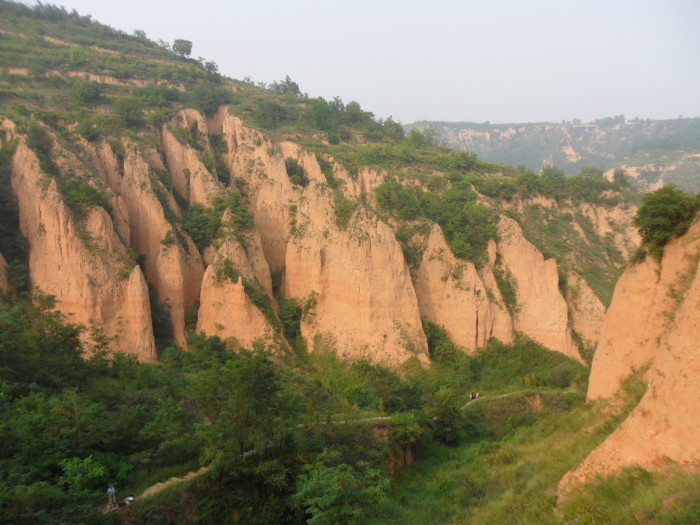Desertification and monsoon climate change linked to shifts in ice volume and sea level

Mountains Dr Thomas Stevens
Huge areas of central China is covered by a plateau consisting of a fine grained soil type called loess – a sediment deposited here by winds during the Ice Age. The soils formed on loess are very fertile and have been one of the key factors driving cultural development and population growth in China for thousands of years. Additionally, the loess plateau also contains a geological archive that can be used to decipher past climate changes.
Through detailed examination of the loess sediments, a group led by researchers at Uppsala University together with colleagues from Denmark has identified how changes in climatological phenomena such as ice volume and sea level also affected the extent of deserts in China, as well as the behavior of the East Asian summer monsoon.
”We have conducted the most detailed dating of the loess to date, which has enabled us to identify changes in the monsoon and desertification processes in more detail and with much greater accuracy than previously possible. We can now compare these changes to other known climate changes such as variation in ice volume, sea level and even the Earth’s orbit during the Ice Age”, says Dr. Thomas Stevens, first author and researcher at Uppsala University.
”We can now show that when ice volume decreased and sea level rose, the summer monsoon rainfalls in East Asia intensified and spread further inland, while sandy deserts in China retreated”, says Dr. Stevens.
With today’s shrinking ice caps and rising sea levels, this has implications for how the Eurasian continent will once again experience changes in the summer monsoon rainfall and desertification.
For more information, please contact Thomas Stevens, Department of Earth Sciences, Uppsala University, tel: + 46 73 645 2007, email: thomas.stevens@geo.uu.se
T. Stevens, J.-P. Buylaert, C. Thiel, G. Újvári, S. Yi, A. S. Murray, M. Frechen & H. Lu (2018) Ice-volume-forced erosion of the Chinese Loess Plateau global Quaternary stratotype site, Nature Communications, DOI: 10.1038/s41467-018-03329-2
Media Contact
More Information:
http://www.vr.seAll latest news from the category: Earth Sciences
Earth Sciences (also referred to as Geosciences), which deals with basic issues surrounding our planet, plays a vital role in the area of energy and raw materials supply.
Earth Sciences comprises subjects such as geology, geography, geological informatics, paleontology, mineralogy, petrography, crystallography, geophysics, geodesy, glaciology, cartography, photogrammetry, meteorology and seismology, early-warning systems, earthquake research and polar research.
Newest articles

Sea slugs inspire highly stretchable biomedical sensor
USC Viterbi School of Engineering researcher Hangbo Zhao presents findings on highly stretchable and customizable microneedles for application in fields including neuroscience, tissue engineering, and wearable bioelectronics. The revolution in…

Twisting and binding matter waves with photons in a cavity
Precisely measuring the energy states of individual atoms has been a historical challenge for physicists due to atomic recoil. When an atom interacts with a photon, the atom “recoils” in…

Nanotubes, nanoparticles, and antibodies detect tiny amounts of fentanyl
New sensor is six orders of magnitude more sensitive than the next best thing. A research team at Pitt led by Alexander Star, a chemistry professor in the Kenneth P. Dietrich…





















